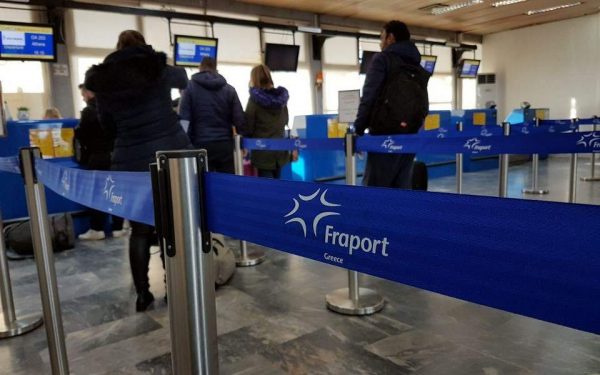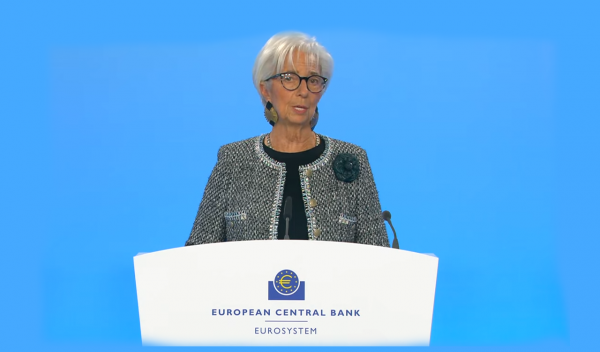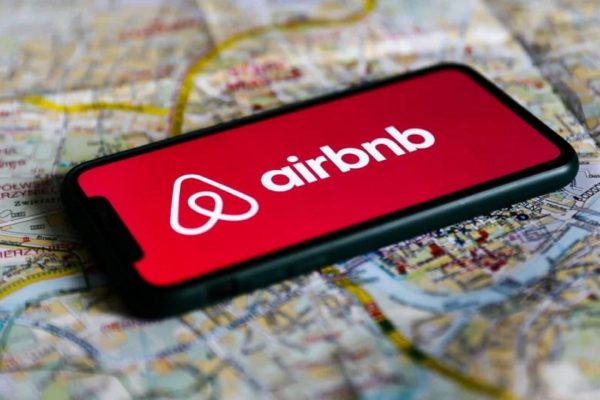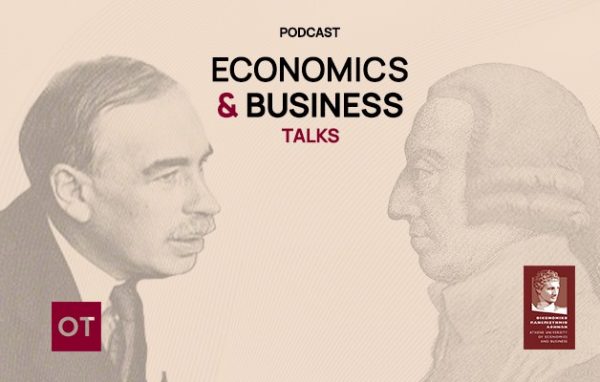
The LNG market is in constant growth, with the global LNG Carriers fleet numbering a total of 700 ships at the end of 2021 and evidence shows that new orders are at peak, according to the latest report of the International Liquefied Natural Gas Importers Group (GIIGNL).
In particular, the 700 vessels included 48 Floating Storage and Regasification Units (FSRU) of Liquefied Natural Gas (LNG), 31 LNG bunkering vessels and 33 LNG carriers. The total cargo capacity at the end of 2021 was 104.1 million cubic metres, while the total operational capacity (vessels known to be in service) amounted to 103 million cubic metres.
Orders, forecasts and estimates
In 2021, 68 vessels were delivered, compared to 47 vessels in 2020, and the number of new orders reached a total of 111, which included 3 FSRUs and 15 vessels (13 LNGBV + 2 LNG carriers) of less than 50,000 cubic metres. In addition, at the end of last year (according to GIIGNL data) the book of new builds consisted of 196 ships with a total capacity of 29.6 million cubic metres, including 5 FSRUs and 25 vessels (22 LNGBVs + 3 LNG carriers) of less than 50,000 cubic metres.
It is worth noting that the order books accounted for 28% of the existing fleet of LNG carriers, with 44 ships delivered in 2022. Of these, one Floating Storage and Regasification Unit (FSRU) and 11 vessels (10 LNGBV + 1 LNG carrier) of less than 50,000 cubic metres are recorded.
In an effort to replace Russian gas with LNG, more and more countries are investing in FSRUs. At the end of 2021, the total fleet consisted of 48 floating units, with a total capacity of 7.1 million cubic meters, while the order books include 5 FSRUs, one of which is scheduled for delivery in 2022.
In the long term, even more demand is expected for LNG Carriers with a capacity of over 50,000 cubic metres. In 2021 there were 588 vessels worldwide, with 166 additional orders, 32 of which are scheduled for delivery this year.
Finally, regarding LNG bunker vessels (LNGBV) for maritime use, the total fleet consisted of 31 vessels at the end of 2021, while in 2022 another 10 vessels are expected to be delivered.
During the same period the average fare in the spot market for a 160,000 cubic metre LNG carrier was $89,200 per day, up 50.4% from an average of $59,300 per day in 2020. Over the past year, fares have risen significantly and benefited, inter alia, from an increase in demand for LNG from Asia combined with an increase in supply in the US.
Increase in global imports in 2021
According to the report, in 2021 global LNG imports increased by 4.5% to 372.3 million tonnes. Specifically, global imports increased by 16.2 million tonnes due to the economic recovery following the lockdown and the continuing trend towards a switch from coal to gas, although the annual growth rate of 4.5% remained far from pre-pandemic levels.
Despite the upward trend, there was a decrease in Europe, with Greece registering the highest drop rate by 25.5%, followed by the Netherlands (a drop of 24.1%). “This situation deteriorated until the last quarter of 2021 and Europe’s difficulty in filling its underground warehouses forced demand to adapt by reducing industrial consumption and switching from gas to coal,” the report stated.
Evidence shows that the market recovery was uneven, with Asia registering the highest growth – led by China, which surpassed Japan as the world’s largest importer of LNG, while Europe registered an 8% decline and struggled to attract LNG shipments throughout most of the year.
Concerning global LNG demand, Asia continued to be the first importing region, with a 73% share of global LNG imports, an increase of 7% compared to 2020, led by China, Japan and South Korea. China imported 79.3 million tonnes, while Japan’s imports amounted to 74.4 million tonnes.
A new country –Croatia– began importing LNG in 2021, bringing the number of importing countries to 44, while the number of exporting countries reached 19. As pointed out, at least six new markets could start importing LNG in 2022 (El Salvador, Ghana, Hong Kong, Philippines, Senegal and Vietnam). Australia was the main exporter of LNG in 2021 with 78.5 million tonnes, followed by significant contributions from Qatar, the US and Malaysia, which combined accounted for 59.8% of the global supply of liquefied natural gas.
On the other hand, the largest reductions in LNG exports were registered in Nigeria (–4.1 million tonnes) due to maintenance problems, Trinidad and Tobago
(–3.9 million tonnes) due to gas shortages, and Norway (–2.9 million tonnes).
According to the report, further growth was recorded in 2021 in the Atlantic region and the Middle East, while the Pacific region, despite a decline in LNG exports, remains the world’s largest producer (143.9 million tonnes or a share of 38.6%).
The USA as a leading exporter
In terms of spot market or short-term time charter contracts, 136.3 million tonnes of LNG were imported, representing 36.6% of total trade, compared to 40% in 2020. The United States consolidated its position as the leading exporter to the spot market with almost a third (32.2%) of trade, followed by Australia with a market share of 18.7%. These imports increased during the seasonal winter peak.
Given the increased demand for LNG, global regasification capacity has increased by 46 million tonnes per year (MTPA), reaching 993 million tonnes. In this context, four new large-scale terminals were opened in Brazil, Croatia, Indonesia and Kuwait, while five expansion projects were completed, four of them in China and one in Japan.
Α vital role in ensuring energy security
In an environment characterised by geopolitical tensions, risks of energy shortages, and price volatility, the market saw a strong return on long-term contracts last year, while the fact that in the six years between 2015–2021 imports of LNG into the EU increased by 73% is noteworthy. As the GIIGNL international group report states, the apparent price volatility was exacerbated in February 2022 by the Russian-Ukrainian armed conflict and the European energy crisis currently underway are a strong reminder of LNG’s vital role in ensuring energy security and economic stability worldwide. “In the future, the replacement of polluting fuels and the geographical mismatch between gas production and consumers will create additional demand for LNG. While many economies are facing the impact of the energy crisis, LNG has great potential to support economic growth and the achievement of net-zero CO2 emissions, provided that additional investment is made at all stages of the market.”
Latest News

Rhodes Airport Tops Fraport Greece’s Regional Airports in 2024 Performance
According to Fraport's data, more than 35 million passengers (specifically 35.2 million) were handled by Fraport-managed airports during the 11 months.

European Central Bank Cuts Interest Rates by 25 Basis Points
It is the fourth cut of interest rates by Europe’s central bank, a move expected by the markets and financial analysts leading to the rate settling at 3%.

Airbnb: New Measures Add €600 in Extra Costs for Property Owners
Property managers face an immediate administrative fine of 5,000 euros if access to the inspected property is denied or any of the specified requirements are not met.

Economist: Greece Included in the Best Performing Economies in 2024
Meanwhile, Northern European countries disappoint, with sluggish performances from the United Kingdom and Germany.

EasyJet Expands Its Routes from Athens
The airline’s two new routes will be to London Luton and Alicante and they will commence in summer 2025.

Capital Link Forum Highlights Greece’s Economic Resurgence; Honors BoG Gov Stournaras
Capital Link Hellenic Leadership Award recipient, Bank of Greece Gov. Yannis Stournaras, an ex-FinMin, was lauded for his pivotal role during Greece’s economic recovery

Tourist Spending in Greece Up by 14%, Visa Card Analysis Shows
Greece’s capital Athens emerged as the most popular destination, recording a 17% increase in transactions with Visa cards, surpassing even the cosmopolitan island of Mykonos.

Inflation in Greece Unchanged at 2.4% in Nov. 2024
The general consumer price index (CPI) posted a 0.4% decrease in November compared to the previous month

2024 Christmas Holidays: Extended Shop Hours Schedule
The 2024 Christmas Holidays extended shop hours schedule commences on Thursday, December 12 and runs until the end of the year.

ELSTAT: Seasonally Adjusted Unemployment Down in October
The number of employed individuals reached 4,284,694, an increase of 67,723 compared to October 2023 (+1.6%) and 22,002 compared to September 2024 (+0.5%).














![Fraport: Πάνω από 35 εκατ. επιβάτες στα αεροδρόμια το 11μηνο – Πτώση στη Μύκονο [πίνακας]](https://www.ot.gr/wp-content/uploads/2022/06/fraport-90x90.jpg)



























 Αριθμός Πιστοποίησης Μ.Η.Τ.232433
Αριθμός Πιστοποίησης Μ.Η.Τ.232433